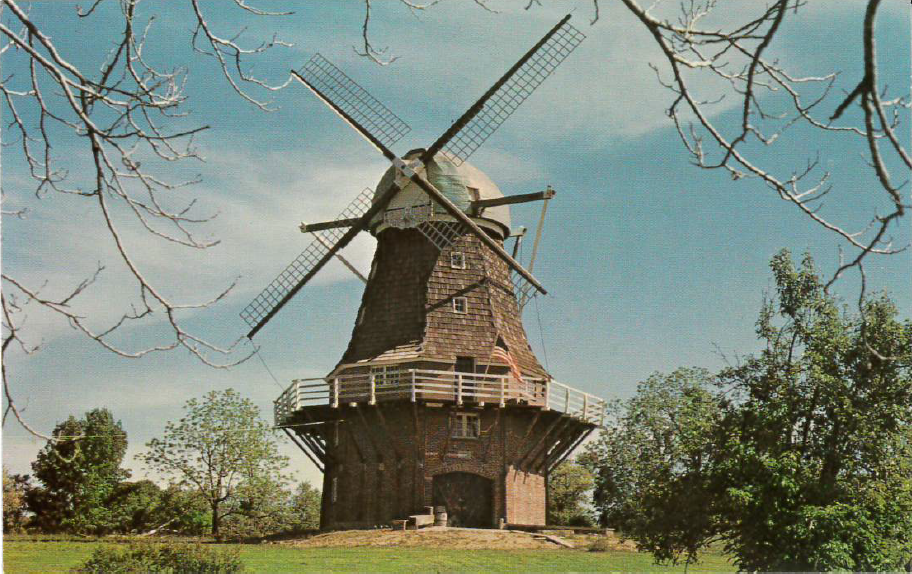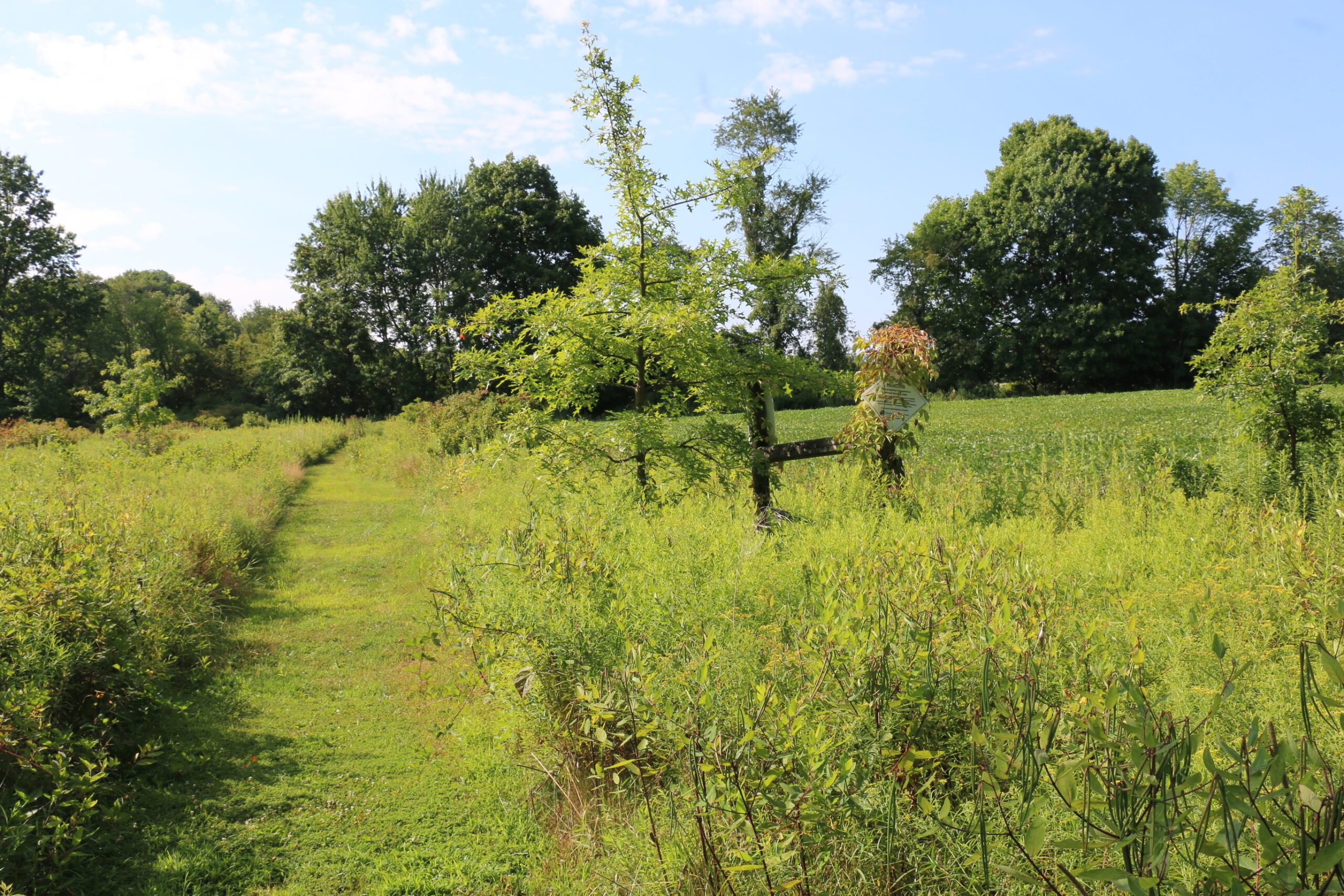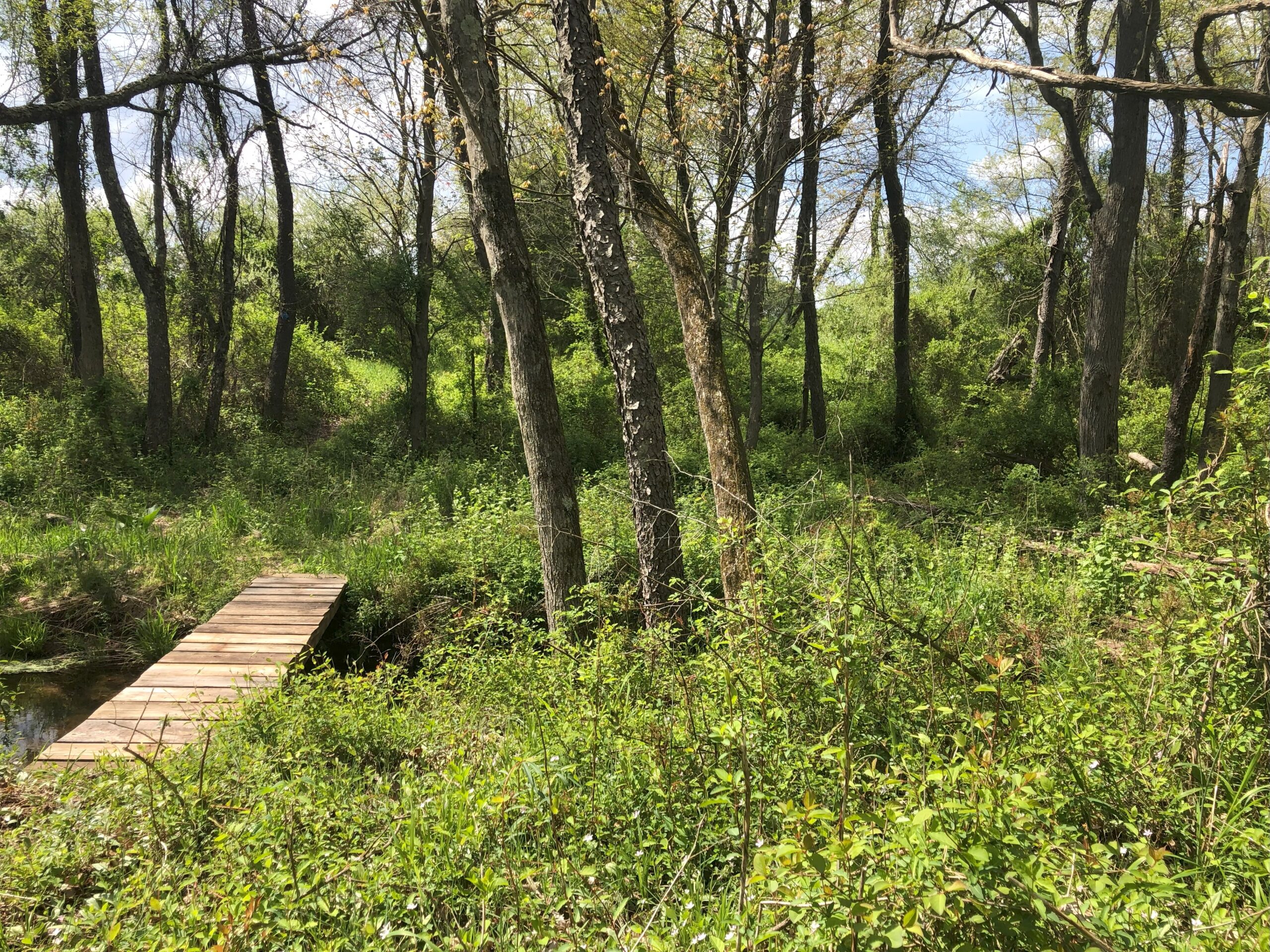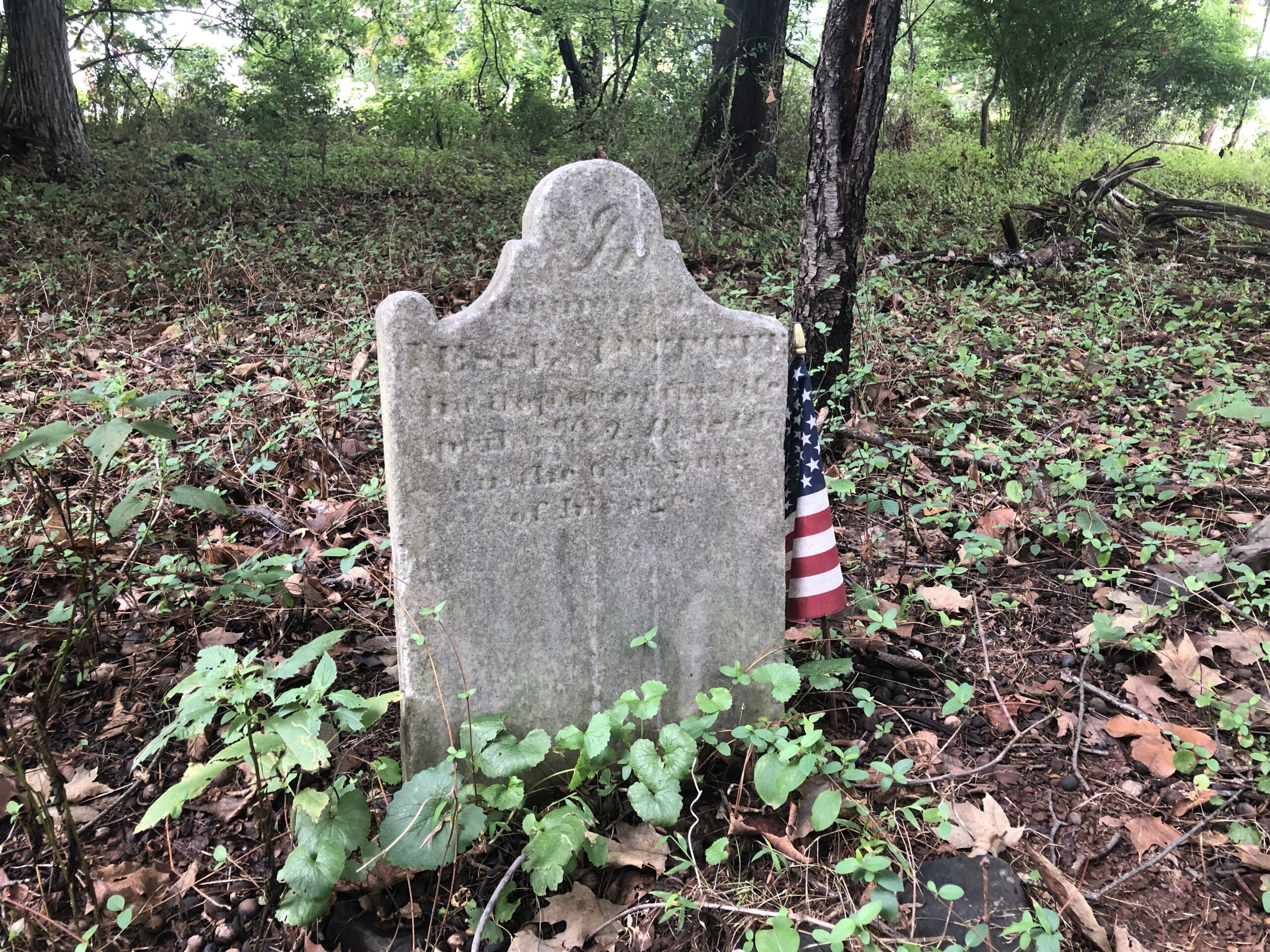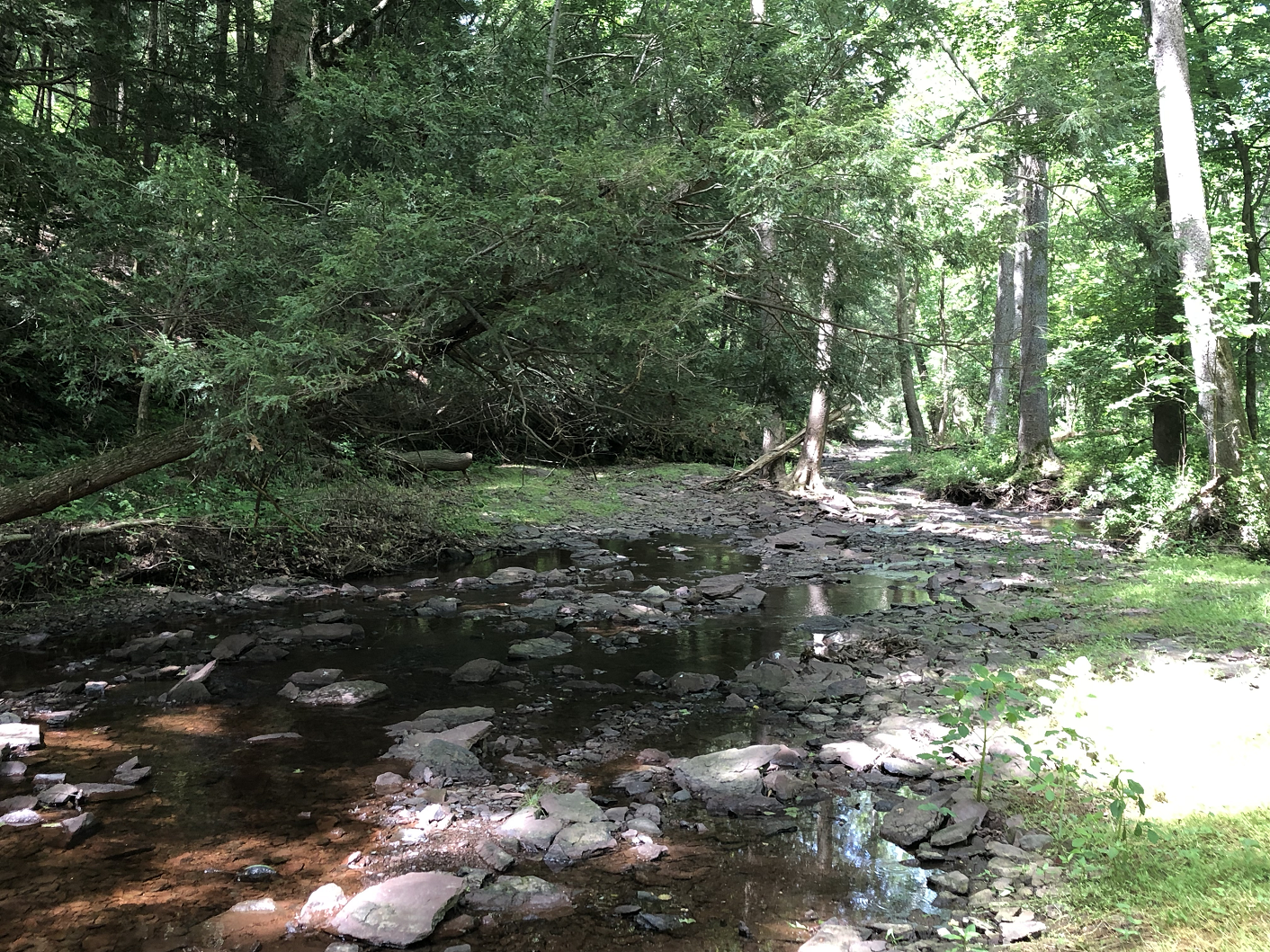Hunterdon Land Trust preserved 127 acres of the Charlie Brown Christmas Tree Farm in Holland Township in 2017 to ensure it would remain farmland for generations to come. This farm is also the site of the Volendam Windmill Museum, and although it’s not part of the preservation deal, the windmill and its construction is quite an interesting story, and serves as another example of our county’s rich cultural heritage. We thought you’d enjoy learning more about it.
When Poul Jorgensen married May Folk in 1964, he no doubt was happy to move onto her roughly 100-acre farm.
You see, Poul always wanted to be a farmer. But when he confessed May this, she wasn’t particularly thrilled.
Perhaps her memory flashed back to when she moved into the historic farm house in 1937 with her first husband, Stanley Folk, and found chickens clucking around the upstairs bedroom. Or maybe she recalled all the long hours of farming and felt that 65-year-old newlyweds should find a less demanding pursuit.
So Poul told her he wanted to build a windmill. May said, “OK. How hard can that be?”
She had no idea what she was getting herself into.
But, first things first. Poul’s idea to build what eventually became the Volendam Windmill Museum stretched far beyond the fact that he lived someplace synonymous with windmills: Holland Township.
Poul was born in Copenhagen, Denmark. Food was scarce for families there during the First World War, but the Jorgensen family lived down the street from a windmill. Whenever the miller had extra grain, he would hang a flag outside the windmill. All the neighborhood children would rush over to sweep the floors, gathering flour to dump into a bag they could shoulder home so their mothers could bake bread.
“He had an affinity for windmills; they really meant a lot to him,” said Randy Brown, May’s great nephew who now lives on the family farm with his wife Kathy.
Poul was particularly suited for the challenge of constructing a windmill. After retiring from the Royal Navy in the 1940s, where he mastered seven languages and eventually became a ship’s engineer, he immigrated to the United States, working as a master model maker, a master machinist and a tool-and-die maker. He was also an inventor, and held several patents.
Poul and May traveled twice to Europe in the early 1960s, studying windmills in Denmark, Holland, France, Spain and Italy. They returned home with a suitcase full of plans, sketches and notations. They started building in 1965. For the next two years, they worked nights, weekends and vacations constructing the windmill.
“He did almost all of the engineering and about 95 percent of the construction,” Randy noted. If Poul didn’t have the exact tool he needed, he made it.
To propel the sails, Poul journeyed to the Philadelphia Naval Yard and purchased a propeller shaft from a destroyer that was being dismantled, said his great nephew Charlie T. Brown, III.
When Poul couldn’t find a lumber yard that sold the oak beams he needed, he took to driving around the New Jersey and Pennsylvania countryside searching for stands of oak. Upon finding one, he would seek out the owner and purchase the trees. He’d hire a sawyer to fell the trees and take them to a saw mill to be cut under his supervision.
“It’s truly a marvel to see what they were able to accomplish with some ingenuity,” Charles T. Brown Jr. said in a 1986 Courier-News article. “These two people moved one-ton millstones to the third floor by themselves. They never hollered for help. They just did it.”
The tower or smock mill is 60 feet high and 35 feet wide at the base. It is composed of 30 tons of steel, 15,000 bricks and 4,800 cement blocks. Its sails are 68-feet long from tip to tip. In theory, the sails would catch the wind and generate the 15 to 22 horsepower to turn the 200-year-old millstone and grind corn into meal.
The sails ran really well – perhaps too well. “The problem was, once he got it to start, it was hard to stop,” Randy said. “They had to throw a rope around the gears at the top and would wind it down like a top to get it to stop.”
The Volendam Windmill – named after a fishing village north of Amsterdam – became a museum and education center upon opening in 1967. Poul and May would often greet visitors in Dutch outfits, offering tours of the windmill and showing off antique farm tools like a corn sheller that dates back to the Revolutionary War and a dog treadle. As the dog trotted uphill on the treadle, the arm moved a shaft up and down in the keg making butter; a pulley in the front of the treadle drove another shaft that went to a drum with a rotating shaft and paddles down in the keg. This contraption functioned as a washing machine.
“There is one thing which all of us have that we can give away and still have,” Jorgensen liked to say, “and that is our experience. I have always thought about giving my experience away to younger people.”
The windmill quickly became a popular attraction, drawing up to 8,000 visitors in 1972, including students from Trenton State College studying engineering, and 90 area school teachers.
Poul lost his battle with cancer in 1983. May kept the windmill open for several years with the help of her nephew, Charles T. Brown Jr., who began operating a Christmas tree farm on the property in the late 1980s.
May kept her late husband’s dream alive until she too passed away in April 1993.
A couple of closing notes: The farm remains in the Brown family. Charlie T. Brown III and Randy Brown run the Christmas tree farm, which is open weekends after Thanksgiving to Christmas Eve. The windmill has been closed since the late 1990s. While the windmill is closed to the public, there are plenty of beautiful places to visit in Hunterdon County. To check out some of our preserves where you can hike and enjoy some beautiful scenery, please go here!
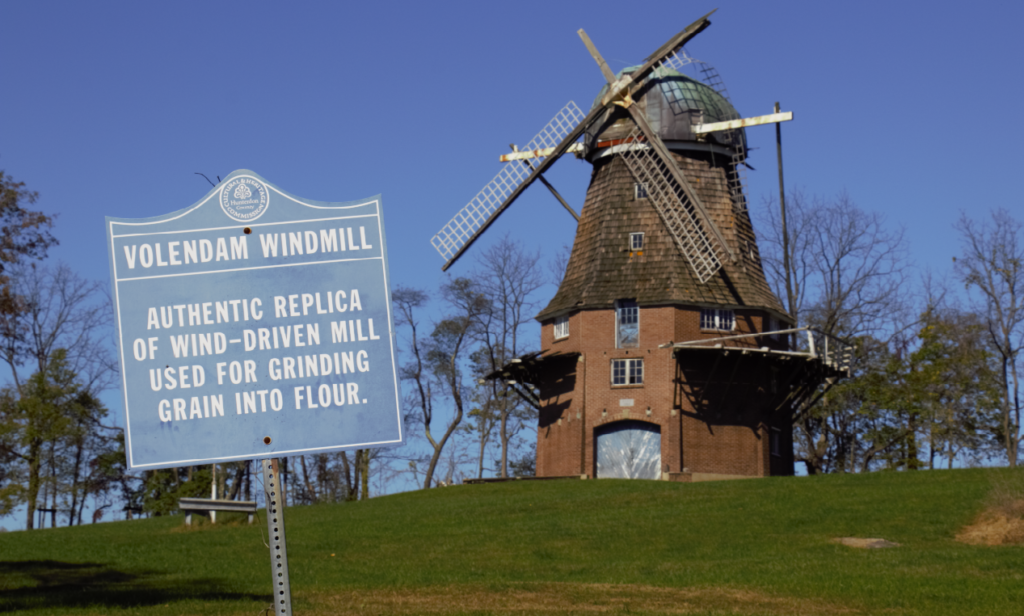
The Volendam Windmill today.

